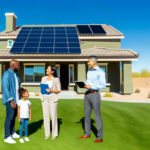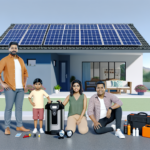Introduction to Solar Cooking
The Rise of Eco-Friendly Cooking
In recent years, the culinary world has seen a significant shift towards eco-friendly practices. As awareness of environmental issues grows, more people are seeking sustainable alternatives to traditional cooking methods. Solar cooking, which harnesses the power of the sun to prepare meals, has emerged as a popular and viable option. This method not only reduces reliance on fossil fuels but also offers a unique and enjoyable cooking experience. From backyard enthusiasts to off-grid living advocates, solar cooking is gaining traction as a practical and environmentally conscious choice.
Benefits of Solar Cookers and Ovens
Solar cookers and ovens offer a multitude of benefits that make them an attractive option for eco-conscious cooks:
- Environmental Impact: Solar cooking significantly reduces carbon emissions by eliminating the need for conventional energy sources such as gas or electricity.
- Cost Savings: Once the initial investment in a solar cooker is made, the ongoing cost of cooking is virtually zero, as sunlight is free and abundant.
- Health Benefits: Solar cooking produces no smoke, reducing respiratory issues associated with traditional cooking methods, especially in developing regions.
- Versatility: Solar cookers can be used to bake, boil, steam, and even dehydrate food, making them a versatile addition to any kitchen.
- Portability: Many solar cookers are lightweight and portable, making them ideal for camping, picnics, and outdoor events.
How Solar Cooking Works
Solar cooking utilizes the sun’s energy to heat and cook food. The process involves three main components: concentration, absorption, and retention.
- Concentration: Solar cookers use reflective materials, such as mirrors or aluminum foil, to concentrate sunlight onto a specific area. This focused sunlight increases the temperature within the cooking chamber.
- Absorption: The cooking vessel, typically painted black, absorbs the concentrated sunlight and converts it into heat. Black surfaces are highly efficient at absorbing solar radiation, which is then transferred to the food inside.
- Retention: To maintain high temperatures, solar cookers are designed to retain heat. This is achieved through insulation and the use of transparent covers that allow sunlight in while preventing heat from escaping.
There are various types of solar cookers, each with its unique design and functionality. Box cookers, panel cookers, and parabolic cookers are among the most common, each offering different advantages depending on the user’s needs and cooking preferences.
In summary, solar cooking is a sustainable and efficient method that aligns with the growing trend of eco-friendly living. By understanding the benefits and mechanics of solar cookers, more people can embrace this innovative approach to preparing delicious and environmentally responsible meals.
Types of Solar Cookers and Ovens
Solar cookers and ovens come in various designs, each with unique features and benefits. Understanding the different types can help you choose the best one for your needs. Here, we explore four main types: Box Cookers, Panel Cookers, Parabolic Cookers, and Hybrid Solar Ovens.
Box Cookers
Box cookers, also known as solar ovens, are among the most popular and user-friendly types of solar cookers. They consist of an insulated box with a transparent lid, typically made of glass, and reflective panels that direct sunlight into the box. The sunlight enters through the lid and is trapped inside, creating a greenhouse effect that cooks the food.
**Advantages:**
– **Versatility:** Suitable for baking, boiling, and slow-cooking a variety of foods.
– **Ease of Use:** Simple to operate, making them ideal for beginners.
– **Safety:** Operate at moderate temperatures, reducing the risk of burns.
**Disadvantages:**
– **Cooking Time:** Generally slower than other types of solar cookers.
– **Portability:** Bulkier and less portable compared to panel cookers.
Panel Cookers
Panel cookers use reflective panels to direct sunlight onto a central cooking pot. They are lightweight, portable, and easy to set up, making them ideal for outdoor activities like camping and picnics. Panel cookers are also typically less expensive than other types of solar cookers.
**Advantages:**
– **Portability:** Lightweight and easy to transport.
– **Cost-Effective:** Generally less expensive than box and parabolic cookers.
– **Ease of Setup:** Simple design allows for quick assembly and use.
**Disadvantages:**
– **Temperature:** Typically achieve lower temperatures than parabolic cookers, limiting cooking methods to steaming, boiling, and light frying.
– **Weather Dependency:** Less effective on cloudy days.
Parabolic Cookers
Parabolic cookers are designed with a parabolic-shaped reflector that concentrates sunlight to a single focal point, achieving higher temperatures suitable for grilling and frying. These cookers can reach temperatures over 200°F, allowing for faster cooking and a variety of cooking methods, including boiling and roasting.
**Advantages:**
– **High Temperature:** Capable of reaching high temperatures quickly, suitable for grilling and frying.
– **Efficiency:** Cooks food faster than box and panel cookers.
**Disadvantages:**
– **Complexity:** More challenging to set up and use, requiring frequent adjustments to maintain focus on the sun.
– **Safety:** Higher temperatures necessitate careful handling to avoid burns.
Hybrid Solar Ovens
Hybrid solar ovens combine solar energy with an alternative power source, such as electricity or gas, to provide consistent cooking performance regardless of weather conditions. These ovens offer the flexibility of solar cooking with the reliability of conventional cooking methods.
**Advantages:**
– **Versatility:** Can be used in any weather, providing consistent cooking performance.
– **Convenience:** Combines the eco-friendliness of solar cooking with the reliability of traditional power sources.
**Disadvantages:**
– **Cost:** Generally more expensive than other types of solar cookers.
– **Complexity:** More components and features can make them harder to use and maintain.
By understanding the different types of solar cookers and their respective advantages and disadvantages, you can make an informed decision about which one best suits your cooking needs and lifestyle. Whether you prioritize portability, cooking speed, or versatility, there’s a solar cooker out there for you.
Key Features to Consider
When selecting a solar cooker or oven, several key features can significantly impact your cooking experience. Here are the most important aspects to consider:
Portability and Size
Portability is a crucial factor, especially if you plan to use your solar cooker for camping, hiking, or other outdoor activities. **Compact and lightweight models** like the GoSun Go Camp Stove Solar Cooker are ideal for those on the move, weighing just under two pounds and measuring 14.17 inches long. On the other hand, if you need a more robust and stationary option, the Sun Oven All American Sun Oven, though heavier at 23 pounds, offers a spacious cooking area and is perfect for basecamp cooking.
Cooking Capacity
The cooking capacity of a solar cooker determines how much food you can prepare at once. For instance, the **SolCook All Season Solar Cooker** boasts a 17-by-17 inch cooking area, large enough to fit a whole turkey, making it suitable for larger meals. Conversely, the **GoSun Go Camp Stove** has a smaller capacity, cooking only 13.5 ounces of food at a time, which is more suited for individual or small group use. Assess your typical cooking needs to choose a model that aligns with your requirements.
Durability and Materials
Durability is essential for long-term use, especially in outdoor environments. Look for solar cookers made from high-quality, weather-resistant materials. For example, the **Haines 2.0 SunUp Solar Cooker** is known for its durable construction, featuring adjustable panels for maximum sun exposure and heat transference. Materials like stainless steel, high-grade plastic, and tempered glass are often used to enhance the longevity and performance of solar cookers.
Ease of Use and Maintenance
A user-friendly design can make your solar cooking experience more enjoyable. Features like easy assembly, intuitive controls, and minimal maintenance are highly desirable. The **Sunflair Portable Solar Oven Deluxe** excels in this area, offering a comprehensive kit that includes baking trays, racks, and pots, all of which are easy to clean and store. Additionally, some models come with helpful extras like thermometers and cooking guides to simplify the cooking process.
In summary, when choosing a solar cooker or oven, consider the portability and size, cooking capacity, durability and materials, and ease of use and maintenance. By evaluating these features, you can find a solar cooker that best fits your lifestyle and cooking needs, ensuring a satisfying and sustainable culinary experience.
Reviewing the Latest Solar Cookers and Ovens
Top Picks for Outdoor Enthusiasts
For those who love the great outdoors, portability and efficiency are key. Here are some top picks:
- Haines 2.0 SunUp Solar Cooker and Dutch Oven Kit: This versatile solar cooker can reach temperatures up to 375°F, making it perfect for slow-cooking stews and meats. Its adjustable panels ensure maximum sun exposure, and its portability makes it ideal for camping and emergency preparedness.
- GoSun Go Camp Stove Solar Cooker: Weighing just under two pounds, this compact solar stove can reach temperatures up to 550°F. It includes an evacuated glass tube oven, parabolic reflectors, and a stainless-steel cooking tray, making it a powerful yet portable option for outdoor cooking.
- Sunflair Portable Solar Oven Deluxe: This lightweight oven folds to the size of a seat cushion and includes a comprehensive kit with baking trays, racks, and pots. It’s perfect for those who need a portable and versatile cooking solution.
Best Options for Off-Grid Living
For those living off the grid, durability and cooking capacity are crucial. Here are the best options:
- Sun Oven All American Sun Oven: This heavy-duty oven features a spacious 14-by-14-inch cooking area and can reach temperatures up to 400°F. It includes a thermometer, spill-proof levelator, and leveling leg, making it perfect for stationary use in off-grid settings.
- SolCook All Season Solar Cooker: With a 17-by-17 inch cooking area and a maximum temperature of 400°F, this cooker is both spacious and efficient. Its articulating panels and sighting system allow for optimal sunlight capture, making it a reliable choice for off-grid living.
Innovative Features in New Models
The latest solar cookers and ovens come with innovative features that enhance their functionality and user experience:
- GoSun Fusion Hybrid Solar Cooker: This model combines solar and electric power, allowing for cooking even when the sun isn’t shining. It can reach temperatures up to 550°F and includes a built-in battery for added convenience.
- Solavore Sport Solar Oven: This oven features a rugged design and can cook at temperatures up to 300°F. It includes a detachable reflector for increased efficiency and a built-in thermometer for precise cooking.
- Sunflair Mini Portable Solar Oven: This compact model is perfect for small-scale cooking and includes a thermometer, baking trays, and a carrying bag. It’s lightweight and folds easily, making it a great option for those on the go.
These solar cookers and ovens offer a range of features to suit different needs, from portability for outdoor enthusiasts to durability for off-grid living. With innovative designs and advanced technology, they make eco-friendly cooking more accessible and efficient than ever.
Practical Tips for Using Solar Cookers
Optimal Conditions for Solar Cooking
To achieve the best results with your solar cooker, it’s essential to understand the optimal conditions for solar cooking. **Direct sunlight** is crucial, as solar cookers rely on the sun’s rays to generate heat. Ideally, you should use your solar cooker on clear, sunny days when the sun is at its peak, typically between 10 AM and 2 PM.
**Positioning** is another critical factor. Place your solar cooker in an open area free from shadows cast by trees, buildings, or other obstructions. Adjust the angle of the cooker to directly face the sun, and re-align it periodically to follow the sun’s movement across the sky. Preheating the cooker for about 15-30 minutes before placing food inside can also help achieve better cooking results.
Recipes and Cooking Techniques
Cooking with a solar cooker can be a delightful and rewarding experience, especially when you have the right recipes and techniques. Here are some tips and a simple recipe to get you started:
**Preparation Tips:**
– **Cut food into smaller pieces** to reduce cooking time.
– Use **dark, heat-absorbing pots** with lids to retain moisture and heat.
– Avoid opening the lid frequently to maintain the temperature inside the cooker.
**Simple Solar Recipe: Solar Baked S’mores**
– **Ingredients:**
– Graham crackers
– Marshmallows
– Chocolate bars
– **Instructions:**
1. Place a graham cracker on a baking tray, top with a piece of chocolate and a marshmallow.
2. Preheat the solar cooker.
3. Place the tray in the cooker and cover with a glass lid.
4. Cook until the marshmallow is melted and golden brown.
5. Top with another graham cracker and enjoy your solar-baked s’mores!
**Cooking Techniques:**
– **Baking:** Ideal for bread, cakes, and casseroles. Use a box cooker for even heat distribution.
– **Boiling and Steaming:** Suitable for vegetables and grains. A panel cooker can be effective for these methods.
– **Grilling and Frying:** Best done with a parabolic cooker, which can reach higher temperatures.
Safety Considerations
While solar cookers are generally safe, it’s important to follow some safety guidelines to ensure a smooth cooking experience:
– **Avoid Direct Eye Exposure:** Never look directly at the reflective surfaces of a solar cooker, as the concentrated sunlight can cause eye damage.
– **Handle with Care:** Use oven mitts or gloves when handling pots and lids, as they can become very hot.
– **Stable Placement:** Ensure the solar cooker is placed on a stable, flat surface to prevent it from tipping over.
– **Supervise Children:** Keep children away from the solar cooker while it is in use to prevent accidental burns or injuries.
– **Monitor Cooking Times:** Solar cooking can take longer than conventional methods, so keep an eye on the food to prevent overcooking or burning.
By following these practical tips, you can make the most of your solar cooker, enjoy delicious meals, and contribute to a more sustainable lifestyle.
Environmental Impact and Sustainability
Reducing Carbon Footprint
Solar cooking is a powerful tool in the fight against climate change. By harnessing the sun’s energy, solar cookers eliminate the need for traditional fuels such as wood, coal, and gas, which are major contributors to greenhouse gas emissions. According to recent studies, widespread adoption of solar cooking could prevent over 30 million metric tons of CO2 emissions over its lifetime. This reduction is equivalent to not burning over 3 trillion rupees worth of coal. By choosing solar cookers, households can significantly reduce their carbon footprint, contributing to a cleaner and healthier planet.
Sustainable Manufacturing Practices
The sustainability of solar cookers extends beyond their use; it also encompasses their production. Many manufacturers are now adopting eco-friendly practices to minimize the environmental impact of their products. This includes using recycled and sustainable materials, reducing waste during the manufacturing process, and ensuring that the production facilities operate on renewable energy sources. By prioritizing sustainable manufacturing, companies are not only reducing their own carbon footprint but also promoting a circular economy that benefits the environment.
Long-Term Benefits of Solar Cooking
The long-term benefits of solar cooking are manifold. Firstly, it offers a sustainable solution to energy scarcity, especially in remote and off-grid areas where access to conventional fuels is limited. Solar cookers provide a reliable and cost-effective alternative, reducing the dependency on non-renewable energy sources. Secondly, solar cooking promotes health and safety by reducing indoor air pollution caused by traditional cooking methods, which is a major health hazard in many developing countries. Lastly, solar cooking fosters environmental stewardship by encouraging individuals and communities to adopt eco-friendly practices, thereby creating a culture of sustainability.
In conclusion, solar cooking is not just an innovative culinary technique; it is a significant step towards a sustainable future. By reducing carbon emissions, promoting sustainable manufacturing, and offering long-term environmental and health benefits, solar cookers are paving the way for a greener and more sustainable world.
Conclusion
Summary of Key Points
In this article, we explored the fascinating world of solar cooking, a sustainable and eco-friendly alternative to traditional cooking methods. We began by discussing the rise of eco-friendly cooking and the numerous benefits of solar cookers and ovens, such as reducing carbon footprints and providing a renewable energy source. We delved into the mechanics of how solar cooking works and examined the different types of solar cookers, including box cookers, panel cookers, parabolic cookers, and hybrid solar ovens.
We also highlighted key features to consider when choosing a solar cooker, such as portability, cooking capacity, durability, and ease of use. Our reviews of the latest solar cookers and ovens provided insights into top picks for outdoor enthusiasts, off-grid living, and innovative features in new models. Practical tips for using solar cookers, including optimal conditions, recipes, and safety considerations, were also discussed. Finally, we examined the environmental impact and sustainability of solar cooking, emphasizing its role in reducing carbon footprints and promoting sustainable manufacturing practices.
Future of Solar Cooking Technology
The future of solar cooking technology looks promising as advancements continue to be made in design, efficiency, and accessibility. Innovations such as improved reflective materials, better insulation, and hybrid models that combine solar and electric power are making solar cookers more versatile and user-friendly. Additionally, the integration of smart technology, such as solar cookers with built-in sensors and automated tracking systems, could further enhance their efficiency and ease of use.
As awareness of environmental issues grows, the demand for sustainable cooking solutions is likely to increase. This could lead to more investment in research and development, resulting in even more advanced and affordable solar cooking options. Furthermore, the potential for solar cookers to be used in disaster relief and humanitarian efforts could drive their adoption in regions where traditional fuel sources are scarce or expensive.
Encouraging Eco-Friendly Choices
Adopting solar cooking is a significant step towards a more sustainable lifestyle. By choosing to use solar cookers and ovens, individuals can reduce their reliance on fossil fuels, decrease greenhouse gas emissions, and minimize deforestation. To encourage more people to make eco-friendly choices, it is essential to raise awareness about the benefits of solar cooking and provide education on how to use these devices effectively.
Communities, organizations, and governments can play a crucial role in promoting solar cooking by offering incentives, subsidies, and support for solar cooker adoption. Additionally, collaborations with non-profit organizations and businesses that focus on sustainable products can help make solar cookers more accessible to those in need.
In conclusion, solar cooking presents a viable and sustainable alternative to traditional cooking methods. By embracing this technology, we can contribute to a healthier planet and a more sustainable future. Let us all take a step towards eco-friendly choices and make solar cooking a part of our daily lives.






